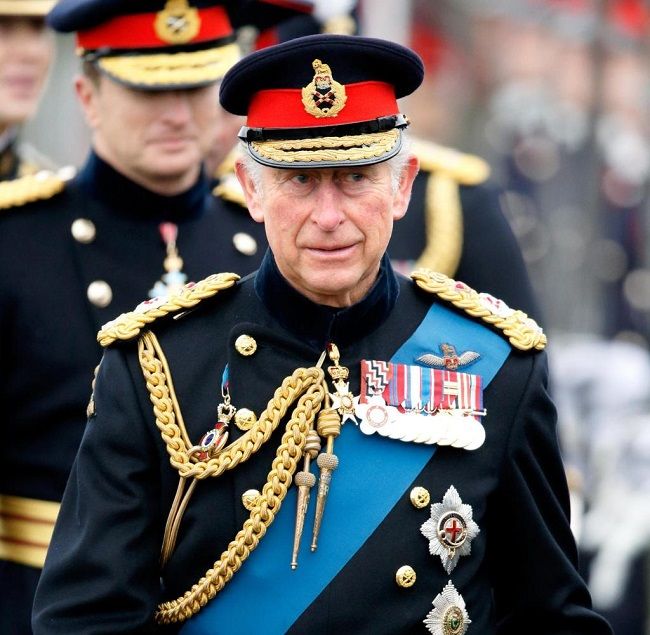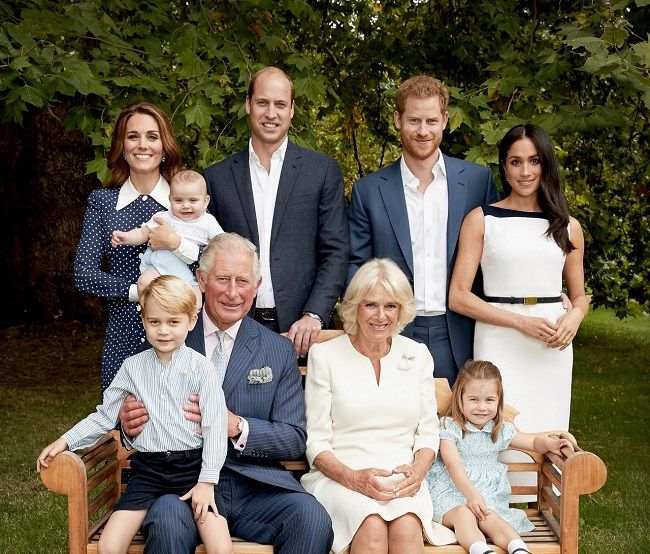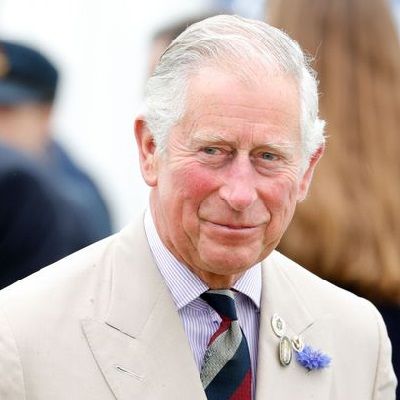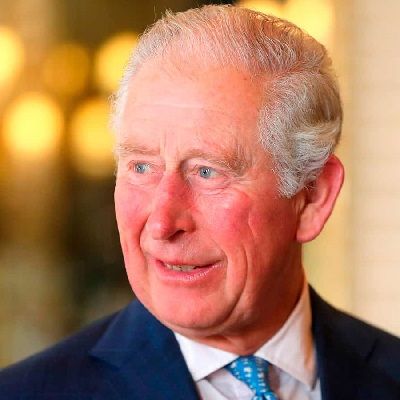Table of Biography
Prince Charles tested positive for COVID-19!
Prince Charles and Duchess Camilla traveled to the royal family’s Balmoral estate in Scotland before the heir to the British throne began displaying mild symptoms. They arrived in Scotland on Sunday 22nd March 2020 and he had displayed mild symptoms over the weekend. Hence, the National Health Service in Aberdeenshire tested him for the novel coronavirus that is causing the global pandemic at this hour. They tested him on Monday, 23rd March and the results came through on Tuesday 24th March.
The results on Tuesday showed that he tested positive for the coronavirus. Nevertheless, Charles is still working, is up and about, and in good spirits. However, Duchess Camilla tested negative and she is self-isolating in a separate wing of the Birkhall residence on the Balmoral estate. Charles and Camilla followed governmental advice and isolated separately.
The Clarance house further wrote that it is not possible to ascertain from whom he caught the virus as he carried out a high number of engagements in his public role during recent weeks. The Clarence House Instagram account also shared an update regarding his health. The caption read:
“Thank you for all your ‘Get Well Soon’ messages for His Royal Highness. He is enormously touched by your kind words.”
At present, Charles continues to keep busy with work while in quarantine. He is said to be overwhelmed at the support he has received from well-wishers who have already sent hundreds of get-well-soon cards and digital messages.
Condition of other Royal family members
At the same time, Kate Middleton and Prince William are also self-quarantining per government advice at Anmer Hall, their estate in Norfolk, near the Sandringham estate. The couple remains in self-isolation with their three children, Prince George, Princess Charlotte, and Prince Louis.
The 71-year-old heir to the throne, Prince Charles, last saw the Queen briefly on 12 March. Three days earlier, the mother and son had more protracted contact during the Commonwealth Day Service. Hence, it is important to re-emphasize that the Queen is in good health.
The Queen moved to Windsor last week, with the Duke of Edinburgh, who came from his usual residence at Sandringham in Norfolk. Given their ages, 93 and 98 respectively, there will be particular care taken that they are not at risk of this virus at present.
A message from the Royal Family
Following the positive result of Charles, The Duchess of Cornwall issued a message and The Clarence House Instagram account shared it:
This is a hard time for everyone, as we are all asked to stay at home to stay safe. But for some of you it is even harder, because home is not a safe place.
I can only imagine that being asked to stay there could feel very isolating and frightening for you and your family. It may mean spending more time with the person who is harming you. If this is your situation, or you are worried about someone else, I want you to know that you are not alone.
Even if you cannot leave your home, you can call the National Domestic Abuse Helpline or contact one of the domestic abuse charities. Please stay safe and get help.
They also provided phone numbers for help in case of danger of domestic abuse. They listed:
If you are in immediate danger, please call 999 and ask for the police.
If you are not in immediate danger, please call one of the following 24 hour helplines:
England: 0808 2000 247
Northern Ireland: 0808 802 1414
Scotland: 0800 027 1234
Wales: 0808 8010 800
Early Life and Childhood
The Prince of Wales, Charles, is the eldest son of The Queen and Prince Philip, Duke of Edinburgh. He was born at Buckingham Palace at 9.14 pm on 14th November 1948. And is currently 74 years old. At the time of birth, he weighed 7lb and 6oz. A proclamation was posted just before midnight. It announced that Her Royal Highness Princess Elizabeth had safely delivered a son who had been named Charles Philip Arthur George.
On 15 December, the Archbishop of Canterbury, Dr. Geoffrey Fisher christened the young Charles in the Music Room at Buckingham Palace. His mother was also proclaimed Queen Elizabeth II at the age of 25, when her father, King George VI, died aged 56 on 6th February 1952. On The Queen’s accession to the throne, Charles became heir apparent at the age of three.
Charles, as Heir to The Throne, took on the traditional titles of The Duke of Cornwall under a charter of King Edward III in 1337. He also took the traditional titles in the Scottish peerage. Those titles were of Duke of Rothesay, Earl of Carrick, Baron of Renfrew, Lord of the Isles, and Prince and Great Steward of Scotland.
He was four years old at the time of his mother’s Coronation, in Westminster Abbey on 2nd June 1953. Many who witness the Coronation have clear memories of him seated between his widowed grandmother, now to be known as Queen Elizabeth The Queen Mother, and his aunt, Princess Margaret.

Caption: Prince Charles and Queen Elizabeth II in an old photo. Source: Elle
Education
The Queen and The Duke of Edinburgh decided that The Prince should go to school instead of having a tutor at the Palace and so The Prince started at Hill House school in West London. He began schooling on 7 November 1956. After 10 months, the young Prince became attended Cheam School, a preparatory school in Berkshire. In 1958, while The Prince was at Cheam, The Queen made him The Prince of Wales and Earl of Chester. The Prince was nine-years-old.
In April 1962, Charles began his first term at Gordonstoun, a school near Elgin in Eastern Scotland. It’s the same school that The Duke of Edinburgh attended. The Prince of Wales spent two terms in 1966 as an exchange student to Timbertop. It is a remote outpost of the Geelong Church of England Grammar School in Melbourne, Australia.
When he returned to Gordonstoun for his final year, the school made The Prince of Wales a school guardian (head boy). The Prince had already passed six O Levels and he also took A-Levels. He received a grade of B in history and a C in French, together with a distinction in an optional special history paper in July 1967.
He attended Cambridge University in 1967 to read archaeology and anthropology at Trinity College. He changed to history for the second part of his degree, and in 1970 received a 2:2 degree.
Beginning of Royal duties
The Queen gave him the title “Prince of Wales” on 1st July 1969 in a colorful ceremony at Caernarfon Castle. Before the appointment, he spent a term at the University College of Wales at Aberystwyth, learning to speak Welsh. Then on 11th February 1970, His Royal Highness took his seat in the House of Lords.
Additionally, on 8th March 1971, he flew himself to Royal Air Force (RAF) Cranwell in Lincolnshire. He did so to train as a jet pilot. At his request, he received flying instruction from the RAF during his second year at Cambridge. Also, in September 1971, after the passing out parade at Cranwell, he embarked on a naval career. He followed in the footsteps of his father, grandfather, and both his great-grandfathers.
Service on the guided-missile destroyer HMS Norfolk and two frigates followed the six-week course at the Royal Naval College, Dartmouth. He then qualified as a helicopter pilot in 1974 before joining the 845 Naval Air Squadron. It operated from the Commando carrier HMS Hermes. On 9 February 1976, Charles took command of the coastal minehunter HMS Bronington for his last nine months in the Navy.

Caption: Prince Charles attends Sovereigns Parade at Sandhurst. Source: Welt
Relationship Status
On 29 July 1981, Prince Charles married Lady Diana Spencer in St. Paul’s Cathedral. She became HRH The Princess of Wales. He was born on 1 July 1961, at Park House on The Queen’s estate at Sandringham, Norfolk. She lived there until the death of her grandfather in 1975. He was the 7th Earl when the family moved to the Spencer family seat at Althorp House in Northamptonshire.
Lady Diana’s father was then Viscount Althorp and later the eighth Earl Spencer. He had been an equerry to both George VI and The Queen. Her maternal grandmother, Ruth, Lady Fermoy, was also a close friend and lady in waiting for The Queen Mother. The royal couple had two sons: Prince William, born on 21st June 1982, and Prince Harry, born on 15th September 1984.
He and the Princess of Wales went on overseas tours together and carried out many engagements together in the UK. However, on 9th December 1992, The then Prime Minister, John Major, announced to the House of Commons that he and Princess of Wales had agreed to separate.
The royal couple dissolved their marriage on 28th August 1996. He was still regarded as a Royal Family member. She continued to live at Kensington Palace and carried out her public work for several charities.
Second Marriage
On 9 April 2005, The Prince of Wales married Parker Bowles in a civil ceremony at the Guildhall, Windsor. After the wedding, Parker Bowles received the title HRH The Duchess of Cornwall. Around 800 guests joined The Prince of Wales and The Duchess of Cornwall at a Service of Prayer and Dedication at St George’s Chapel, Windsor Castle. The Service followed a reception at Windsor Castle hosted by Her Majesty The Queen.
Charles’ romantic relationship with Camilla Parker Bowles began in his twenties. This was also a cause for Prince Charle’s separation from Princess Diana. Princess Diana famously blamed Parker Bowles for the breakdown of the marriage. She also told BBC1 Panorama in 1995:
“Well there were three of us in this marriage so it was a bit crowded.”
Charles and the Duchess of Cornwall married 30 years after their romance first began. It was the first time a direct descendant to the throne was allowed to remarry and that too, to a divorcee.

Caption: Prince Charles in a portrait with his wife, children, and grandchildren. Source: Chatelaine
Princess Diana’s Death
The Princess died in a car crash in Paris on 31 August 1997. Charles, The Prince of Wales then flew to Paris with her two sisters to bring her body back to London. The Princess lay in the Chapel Royal at St James’s Palace until the night before the funeral.
Additionally, on the day of the funeral, Charles accompanied his two sons as they walked behind the coffin from The Mall to Westminster Abbey. His sons were only 15 years and 12 years at the time of Princess Diana’s death. The Duke of Edinburgh and his brother, Earl Spencer accompanied them.
Charles requested the media to respect his sons’ privacy and allow them to lead a normal school life. In the following years, Princes William and Harry accompanied their father on a limited number of official engagements in the UK and abroad. They are second and sixth in line to the throne.
Charities
Moreover, The Duchess supports Prince Charles in his work. Through the years, His Royal Highness developed a wide range of interests which are today reflected in The Prince of Wales’s Charities. It is a group of not-for-profit organizations of which The Prince of Wales is the Patron or President.
These interests are also reflected in the list of more than 400 organizations of which His Royal Highness is Patron or President. His interest in fields such as the built environment, global sustainability, youth opportunity, education, and faith have been elaborated on over many years in a large number of speeches and articles.
Controversy
Prince Charles caused controversy when he called his friend, Kolin Dhillon “Sooty”. Kolin is a British Asian businessman and he defended the Prince against accusations of racism. He clarified that the nickname was a “term of affection”.
Moreover, there was anger in the public when Charles tested positive for COVID-19 recently. At a time when even the immediate medical practitioners had difficulty accessing test kits for the virus, the NHS tested the Royal Family. The public questioned where the kits came from and also accused the Prince of jumping the line for testing.
Prince Charles – Body Measurements
Prince Charles stands tall at a height of 1.78 m and weighs around 75 kgs. Similarly, he has naturally blue eyes and hair of a dark brown color. But his hair has turned white due to aging.



